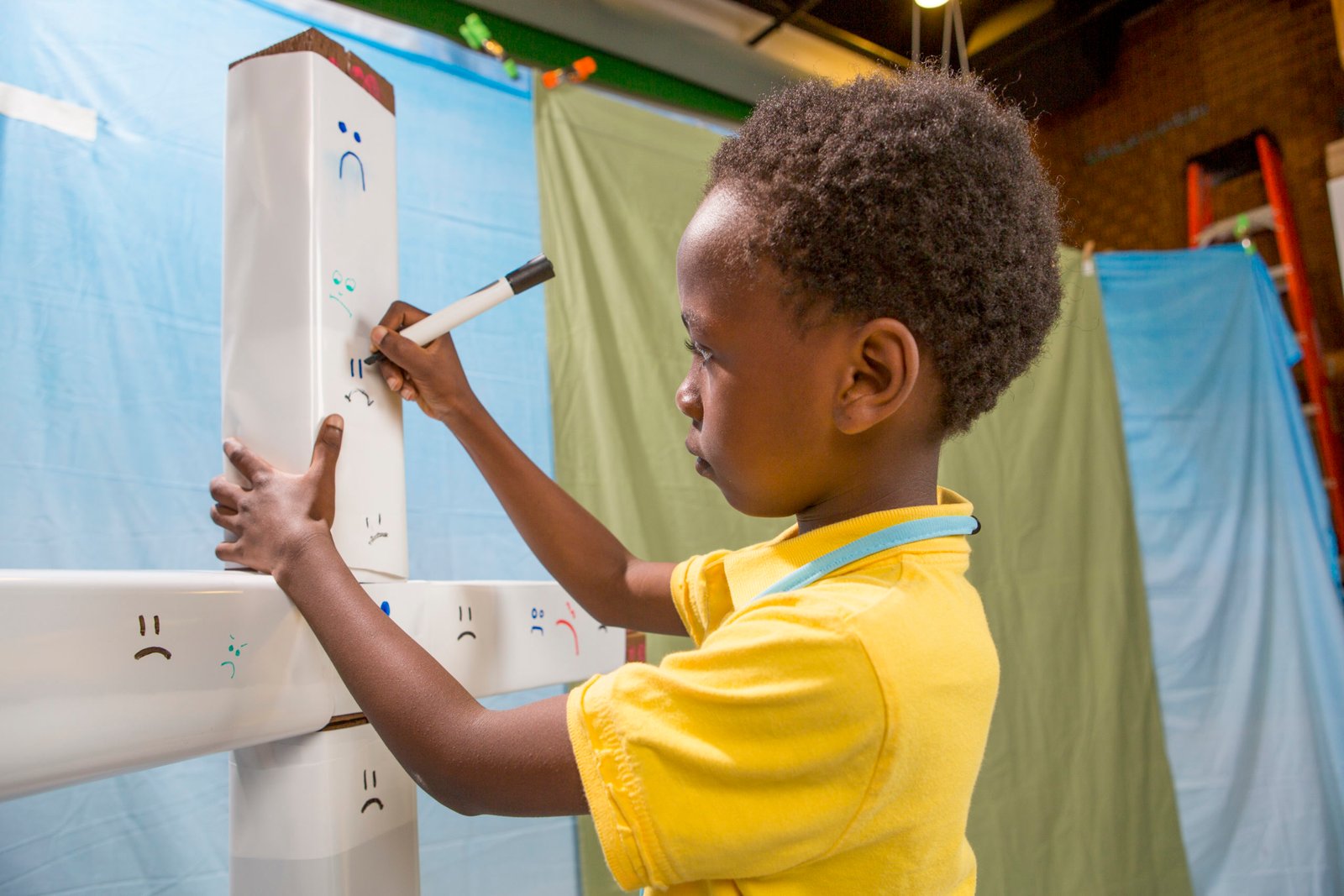[ad_1]
Want to help children understand the story of Easter in age-appropriate ways? These age level insights from a Licensed Pastoral Counselor will help.
After his mom read aloud a book about the Easter story, a four-year-old boy turned to her and said, “I don’t want Jesus to die on the cross because I love him.”
You see, this young friend is beginning to understand that death is permanent, and when someone dies, you can’t see or talk to that person anymore. We can understand why he wouldn’t want his loving friend, Jesus, to die or go away.
The boy’s mom explained that Jesus is special because he is God’s Son. Jesus died, and then came back to life again, so now we can be Jesus’ forever friend! In response, the little boy made the shape of a heart with his hands and said, “Then I’m going to find Jesus with my heart.”
Moments like these are just the sweetest, aren’t they? And they reveal just how complex and abstract the story of Easter can be for young minds—and grown-up minds, too!
Ask an Expert!
So as we share the story of Jesus’ death and resurrection with children this Easter, what age level insights will help us share the Gospel in a way that goes from kids’ heads to their hearts?
We may not have all the answers, but experts in child development and psychology can help us! For example, Dr. Kayla Pray is a Licensed Clinical Pastoral Counselor using the best of psychology with biblical foundations and perspectives. We asked Dr. Pray to share child development insights that aid our understanding of children. Plus, she provided age level insights for telling kids the good news of Jesus.
What NOT to Do
First, what should we avoid when sharing the story of Jesus’ death and resurrection with kids? Dr. Pray suggests avoiding assumptions and oversharing.
“Do not assume that they have heard any of this story before, or that they have had conversations about death at home. Treat every part of the Easter story as brand-new information. (And) do not share more than is needed for the age you are working with. The goal of the Easter story is to point to Christ as the only salvation we have from sin. Details of suffering do not necessarily lead to repentance, but terror.”
Second, don’t go it alone. Remember that a good curriculum will help you! The best lessons share the Easter story with kids through words, hands-on experiences, and conversations. So lean on your lesson as you teach, and let this additional conversation guide you when kids take you off script—either through personal conversations or questions posed in your group.
Since Jesus’ death is a foundational part of the Easter story—and our faith—let’s think about age level insights into the concept of death and suffering. Additionally, consider an example for how we might summarize the Easter story for each age and stage.
Age Level Insights: Twos and Threes
These young children may not have heard of or experienced death yet. According to Dr. Pray, for these children, “death is not a permanent idea, but a temporary out of sight out of mind.” She notes that, for them, it’s reasonable to think that “an individual who dies could come back.”
If you think about it, this is why saying goodbye to mommy or daddy at drop off can be so hard for these little friends. Kids need help realize that people they can’t see still exist. So we assure them that “Mommy will be back!” Or “Daddy is just over there in another room.”
Additionally, Dr. Pray notes an additional age level insight for twos and threes. “Suffering is a complete unknown and can only be understood in the nominal physical pain of a boo-boo.”
So when summarizing the Easter story for these littlest ones, we might “cliffnote” Jesus’ suffering and emphasize that God’s special Son came back again! We might say something like this:
- People hurt Jesus and he died. Jesus’ friends were sad when Jesus died. They didn’t think they’d see him anymore. But through God’s mighty power, Jesus came back again! Hooray, Jesus!
Age Level Insights: Preschool
Dr. Pray explained that, for preschoolers, “Death has more permanence.” Like the four-year-old talking with his mom, preschoolers understand their “inability to see or talk to the deceased.”
Consider an episode of Mr. Roger’s Neighborhood, where Mr. Roger’s fish dies. Slowly and with great intentionally, Mr. Rogers walks his preschool audience through the death of a pet, helping young children understand the permanence of death and process the feelings that go with it. Having grasped the idea of death with caregivers or teachers like Mr. Rogers, of course our four-year-old friends don’t want the Jesus who loves them to die. That age level insight makes sense!
But we know that the Easter story is different because Jesus didn’t stay dead. As their children’s ministry leaders, we must explain to preschoolers how special Jesus is. Since Jesus is God’s Son, Jesus is stronger than death. Dr. Pray suggests, “In the Easter story, it is important to clarify the supernatural, holy being of Christ. He alone is able to raise from the dead because he is God.”
So when summarizing the Easter story for preschoolers, we might say something like this:
- Jesus is God’s special Son. Jesus came to Earth to show us God’s love. Some people didn’t like Jesus. They hurt Jesus and Jesus died. But since Jesus is God’s Son, Jesus is bigger than death. Jesus didn’t stay dead. He came back to life again! Jesus made a way for us to be his friends forever. Hooray, Jesus!
Age Level Insights: Lower Elementary
Now let’s consider school age children—specifically those in lower elementary. For children in kindergarten, first, and second grade, death is a bit more familiar. Dr. Pray suggests that for them, “Death is permanent, and sadness and grief over death is felt. But confusion still exists about why and how death occurs.”
Additionally, lower elementary children are just beginning to grasp the idea of suffering. According to Dr. Pray, “Suffering is understood as a large amount of pain.” But in most cases, these children personally have “little experience or thought of it.” These children are just beginning to grasp how much Jesus endured when he died on the cross, so, with age level insights in mind, we’re gentle with the details.
Again, when sharing the story of Easter with lower elementary children, it’s important to emphasize that only Jesus could die and come back to life again—because he’s God! Dr. Pray notes, “In some households, Jesus, Santa Claus, and the Easter Bunny are all spoken about in the same tone. This leads to confusion about death and magic and who can come back to life.” So we emphasize that this story is true and something only God can do.
Conversation Helpers
As we process the Easter story with kids in this age and stage, try incorporating questions to help kids understand the story and why it matters. We may say things like this:
- Jesus is God’s special Son. Jesus came to Earth to show us God’s love and rescue us from sin. When we sin, we make wrong choices. Sin hurts our friendship with God and others.
- Some people didn’t like Jesus. They didn’t like what he said about God and God’s plans. So they came up with a way to get rid of Jesus. They hurt Jesus and made fun of him.
- Jesus suffered a lot. And since Jesus is God’s Son, he could have stopped people from hurting him. But he didn’t. He chose to die so our sin could be forgiven. Jesus showed God’s love and forgiveness in the biggest way possible!
- Here’s the good news: Since Jesus is God’s Son, he’s bigger than death. Jesus didn’t stay dead. He came back to life again! Jesus made a way for people to be forgiven and forever friends with God.
And we may ask questions like this:
- How does it feel when someone makes fun of you? Does it help you to know that Jesus, God’s Son, knows what that feels like? Why?
- How does it feel to know that Jesus forgives our sin?
- What questions do you have about being friends with God forever?
Age Level Insights: Upper Elementary
Our preteen friends are more affected by death and suffering. They’ve seen news stories, heard about tragic events, or even experienced heartbreak in their own families.
Dr. Pray says, that for them, “Death is understood as permanent, inevitable, and is often scary. Children this age may have fears and terrors of people they love dying, themselves dying, or pets dying.”
Experience and exposure make death more concrete for kids this age, and suffering is understood as “a deep level of pain that is longer lasting.” So as we share difficult details of Jesus’ death with preteens, we can keep these age level insights in mind as we emphasize Jesus’ love and God’s grace.
Conversation Helpers
We can help preteens connect the dots and see the Easter story as part of God’s big rescue plan to rescue and redeem humanity. We may say things like this:
- John 3:16 says, “For this is how God loved the world: He gave his one and only Son, so that everyone who believes in him will not perish but have eternal life.” Jesus is God’s only Son that verse talks about. Jesus came to Earth to show us God’s love. Jesus explained God’s plan to rescue people, not from the Roman empire which was in charge back then, but from the power of sin and death. When we sin, we make wrong choices. Sin hurts our friendship with God and others.
- Powerful religious leaders thought Jesus was up to no good. They didn’t believe Jesus was really God’s Son. So they came up with a plan to get rid of Jesus. They had Jesus arrested. Jesus was treated like a criminal. He was hurt and taunted and humiliated.
- Jesus suffered a lot. And since Jesus is God’s Son, he could have stopped people from hurting him. But he didn’t. Jesus chose to die to show God’s love and forgive our sin. Jesus showed God’s love and forgiveness in the biggest way possible!
- Here’s the good news: Since Jesus is God’s Son, he’s bigger than death. Jesus didn’t stay dead. He came back to life again! Jesus made a way for us to be forgiven and forever friends with God.
- We can’t earn God’s love and forgiveness on our own. And thanks to Jesus, we don’t have to! When we believe in Jesus, God’s love and grace is a free gift we receive and enjoy.
And we may ask questions like this:
- How does it help you to know that Jesus loves you that much?
- How does it feel to know that God forgives your sin, and you can be friends with God forever?
Trust the Holy Spirit
As you lead children this Easter and tell of Jesus’ death and resurrection, remember your goal. It’s not mastering information. It’s not covering all the details. And it’s not to shame or guilt children into belief. Rather, it’s to partner with the Holy Spirit in sharing the enormity of God’s love with his children.
As we age and mature, God continues to reveal his plan and his heart for us. Dr. Pray reminds us, “The crucifixion is not a theological event that we process one time and glean all we need in childhood. It is a deep lesson that, as we mature in Christ more and more, is revealed to us.”
As we keep these age level insights in mind, may God reveal more and more to his children this Easter—including us! And together, may we grow to know and love Jesus more.
To borrow our four-year-old friends’ desire, may we all “find Jesus with our hearts.” He’s ready and waiting for us!
Want more age level insight into the children you lead? Consider taking the Age Level Insights for Spiritual Development Group U online training course.
© Group Publishing, Inc. All rights reserved. No unauthorized use or duplication permitted.
[ad_2]
Source link







You must be logged in to post a comment.